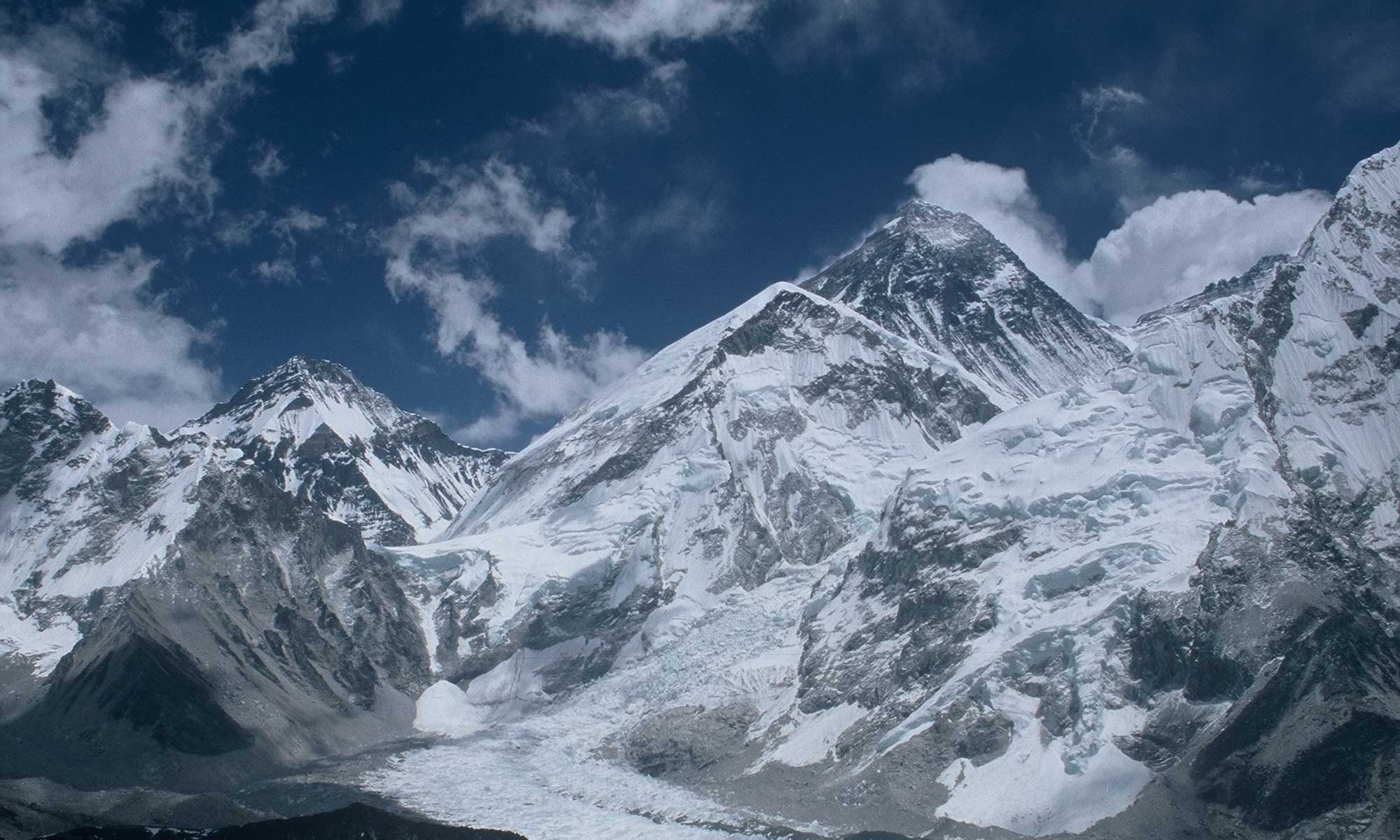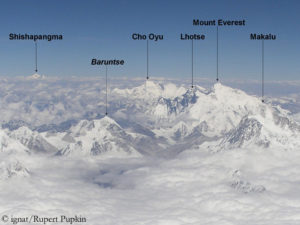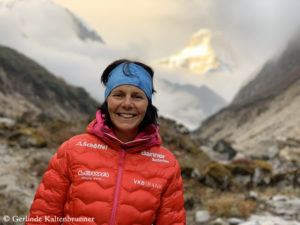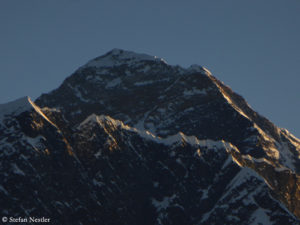Recently, a German rapper set a new Guinness World Record on an entertainment show on German television: He stacked seven doughnuts within 30 seconds without them falling over. The musician managed it on his second try, so he did it without any training. Is he now the king of the doughnut stackers and an exceptional international performer in this discipline? The Guinness Book of Records also lists a U.S. woman as the “Doughnut Queen,” who stacked twelve of the round pastries in 2018.
Both probably benefited from the fact that hardly anyone would think of piling up doughnuts under time pressure and having it certified by referees. But apart from that, this example shows that the conditions under which records are set often play a decisive role. Presumably, no one had ever tried to do it in 30 seconds before. And if the rapper had had a minute, he probably wouldn’t have ended up in the record book. It’s a similar story with mountain records.
Helicopter, Sherpas, bottled oxygen, normal route
The conditions under which they are achieved make all the difference – and as a rule they cannot be compared. If, for example, Kristin Harila, currently on Manaslu, were to stand on the summits of all 14 eight-thousanders this year, it would certainly produce a lot of headlines. But would she outshine the achievement of Gerlinde Kaltenbrunner, for example, who needed 13 years to do it?
Not at all. Unlike the Norwegian, the Austrian top climber did not have herself flown from one base camp to the next by helicopter, was always en route in a small team and without high altitude porters, and sometimes also tried off the normal routes – for example, when she scaled K2 via the seldom-climbed Northwest Ridge in 2011, thus completing her collection of eight-thousanders.
Mountains also change
Speed records on a mountain also make little sense, even if they were set in the same style on the same route – because conditions on the mountain can change, sometimes even within a few minutes because of a change in the weather but also in the medium term. Thus, the experienced Nepalese mountain guide Mingma Tenzi Sherpa wrote yesterday on Facebook from the eight-thousander Annapurna I: “This year’s climb is on another level. The route has dramatically changed since my last ascent, with more crevasses than ever before. (…) It’s a shock to see mountain in this state – perhaps global warming effect?”
The most successful German high-altitude climber Ralf Dujmovits told me similar things about Manaslu last fall. Climbing times cannot be compared against this background, unless one were to send two climbers off at exactly the same time.
Not only arriving at the top decides
Even when simply counting summit successes, the problem of lack of comparability arises. Two ascents of Mount Everest in one season by experienced Sherpa guides – thanks to perfected infrastructure on the normal routes and better equipment – have long ceased to be a rarity. On Makalu, Lhakpa Sherpa even reached the summit three times (!) within 16 days last year. Kami Rita Sherpa currently stands at 26 Everest summit successes, Pasang Dawa Sherpa at 25, Ngima Nuru Sherpa at 24 ascents.
But can this be compared, for example, with the achievements of the legendary late Ang Rita Sherpa (1948-2020)? The “Snow Leopard” summited Everest ten times in the 1980s and 90s, nine of them without bottled oxygen, opened a new route variant over the South Pillar in 1984 with the Slovaks Zoltan Demjan and Jozef Psotka, and in 1987 managed the first and so far only winter ascent of the highest mountain on earth without a breathing mask. Which brings us back to style.
Record beats risk?
Why is there so much talk about records in mountaineering when the achievements are not really comparable? The reason is obvious: records are easy to market – even in mountain sports, where sponsorship and self-promotion via social media play an increasingly important role. Unlike sports in stadiums or indoor arenas, however, mountaineering takes place in the great outdoors and therefore also involves considerable risks. As is currently the case on Manaslu, where there is a high risk of avalanches following heavy snowfall.

Yesterday, Nepalese mountain guide Gelje Sherpa reported on Instagram that the rope-fixing team had been hit by an avalanche and was only lucky to escape with their scare. Normally, in this case, the only option should be to descend and wait. But according to Gelje, with Harila’s eight-thousander hunt in mind, a summit attempt was also up for debate yesterday – “because of Kristin’s project which is under time pressure. (…) It’s a difficult situation between listening to our team leader or doing what is safest even though it’ll take longer than we have.” In other words, record beats risk? That’s where a red line is crossed for me.




